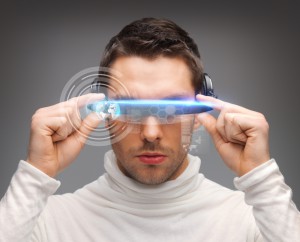Wearable Technologies Push Legal Frontiers
When I was a kid, I remember electric blankets were all the rage. However, after reports of these blankets causing fires, they quickly became a thing of the past. A few years ago, after Google Glass emerged, I couldn’t help but think of the electric blanket–an interesting, novel product, but with a slew of potential legal troubles that may ultimately leave owners getting burned. As it would turn out, Google Glass was merely the tip of the iceberg for the revolution of wearable technology. However, it seems as though concerns over the potential problems of these wearable technologies is entirely warranted. 
What Is Wearable Technology?
While it may seem like an obvious question, it deserves a bit of an explanation. “Wearable technology” describes clothing or accessories, such as a bracelet or glasses, which utilize computer technology that gives the wear some heightened sense of practicality. An early example of this is a calculator watch. In addition to giving the person the ability to tell time, they could calculate tips or other simple math equations on the fly.
The most talked-about wearable technology is Google Glass. You wear Google Glass just like any other set of glasses, except instead of polarization and UV protection, these glasses offer people the ability to surf the web, check the weather, read text messages, and even make photographs and record video in 720p.
“Smart watches” are also receiving an increasing amount of attention. These devices are similar to calculator watches, in the sense that they keep time in addition to other functions. Where they differ is that rather than just compute numbers (which they can still do), these watches also operate as .mp3 and FM radio players, cameras, GPS navigation systems, and even as a cell phones. Wristband devices can also monitor your heart rate, sleep quality, and how many calories you burned.
Clothing companies have even started entered the wearable technology field. What some of these “clothes”–if you can call them that–can do is astonishing. For instance, BB.Suit has designed a piece of clothing that makes the wearer a walking WiFi hotspot, Studio Roosegaarde has crafted a type of high-fashion dress that becomes ‘see-thru’ as the person’s heart rate increases, and there has even been talk of companies testing prototypes of clothes that can harness solar power.
Why Is Wearable Technology a Legal Concern?
Wearable technologies have the potential for causing serious privacy violations. For example, those equipped with an app called “Winky” could use Google Class trigger the camera mechanism with the blink of an eye. This not only raises concerns over privacy, but also sparks an interesting issue with various wiretapping laws.
Private establishments have every right to maintain some manner of control over the conduct of people entering their premises. Shortly after the first Google Glasses started popping in the San Francisco Bay Area, many establishments began posting signs that asked wearers to remove their glasses before entering due to privacy concerns of other customers. Casinos in Las Vegas have banned them outright.
Law enforcement has been having trouble regulating the use of Google Glass. In October of 2013, a San Diego woman was ticketed for wearing her glass while driving. Ultimately, the case was thrown due to a lack of evidence that the glasses were actually on and in use while the woman was behind the wheel. But the statement was already made: Don’t Google and drive. In other parts of the country, legislatures have made efforts to get the Google Glass put in the same category as a cellular phone.
Smart watches pose many of the same problems as Google Glass. If glasses are causing a ruckus by being able to send texts, access the Internet, and capture images in the wink of an eye, it is not unreasonable to see how the exact same privacy concerns arise over a watch that can do the exact same thing with the flick of a wrist. Similarly, using smart watches to text and talk while driving will force legislatures and law enforcement alike to figure out ways to control the use of these devices, many of which look like normal wrist watches.
Aside from criminal issues, there are also concerns over health and safety. “Fitbit,” who manufacture an athletic wristband, recalled one of its models after users began to complain of skin irritation. As the popularity of wearable technology grows, so will the lawsuits over design defects and harm caused by them.
The Legal Community Should Encourage Innovation
Regardless of the potential legal problems the legal community, it is exciting to see how much technology has grown in the last twenty years. If watches that double as phones and temperature regulated jackets are today’s hot item, it’s mind boggling to think of what type of gadgetry the next twenty years will bring us. When developing laws to regulate new technologies, the legal community should be careful to not impede future innovations.


Comments